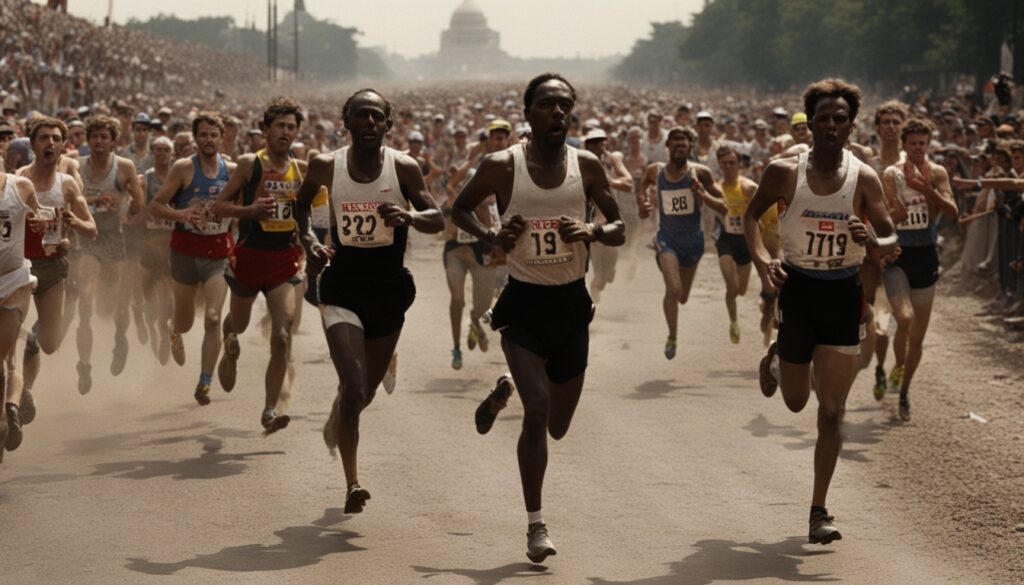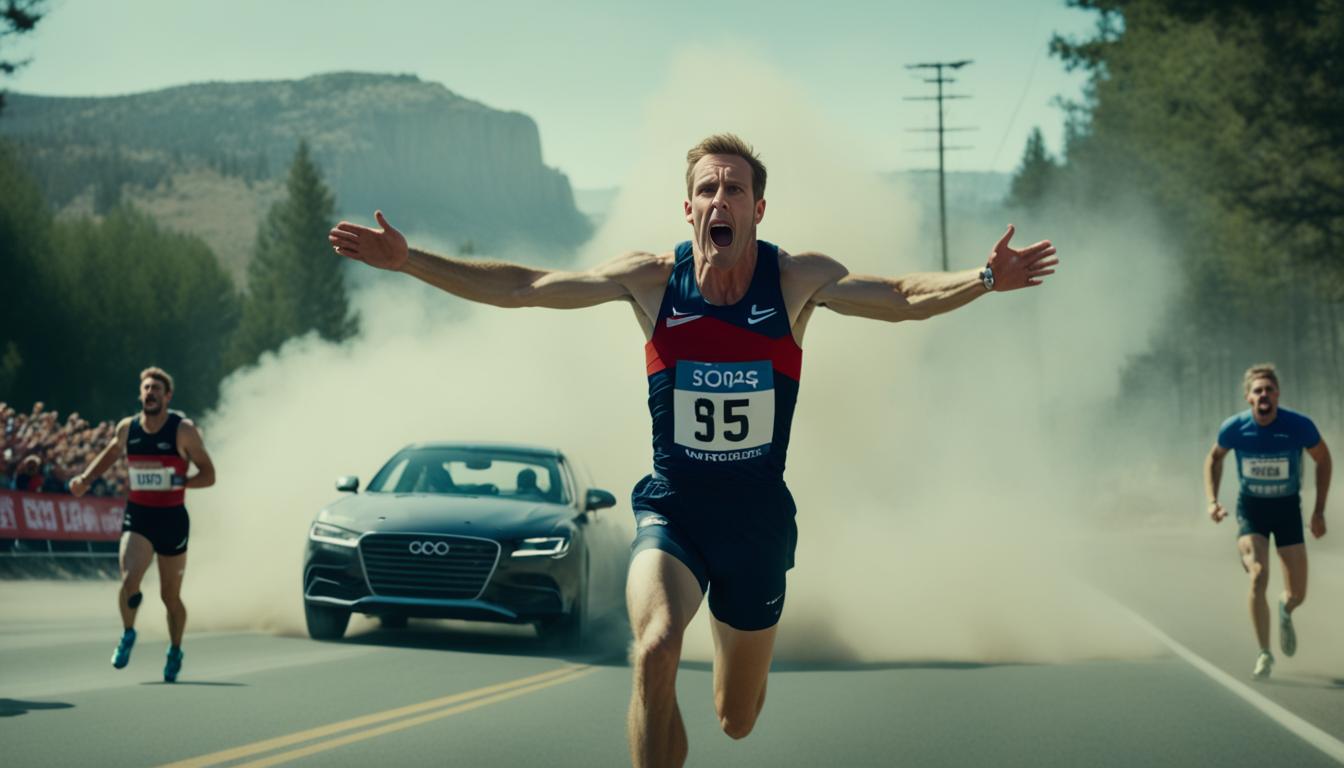The 1904 Olympic marathon in St. Louis was marred by a cheating scandal involving Frederick Lorz, who initially appeared to have won the race. However, it was later revealed that Lorz had ridden in a car for 11 miles during the grueling marathon, leading to his disqualification.
Lorz, an American athlete, was plagued by muscle cramps during the race. At around the 10-mile mark, he flagged down a car, likely belonging to his coach, and took a ride back to Francis Field. Remarkably, Lorz decided to continue the last few miles on foot, entering the stadium and crossing the finish line to claim victory in under three hours.
Just as First Daughter Alice Roosevelt Longworth was about to crown Lorz as the victor, a spectator revealed the shocking truth about Lorz’s car ride during the race. Lorz defended his actions, claiming it was merely a joke, but the stunt ultimately earned him a lifetime ban from the sport.
Key Takeaways
- Frederick Lorz initially appeared to win the 1904 Olympic marathon in St. Louis
- Lorz took a car ride for 11 miles during the race due to muscle cramps
- He continued the last few miles on foot and crossed the finish line first
- A spectator revealed Lorz’s cheating, leading to his disqualification
- Lorz claimed it was a joke but received a lifetime ban from the sport
The Infamous 1904 Olympic Marathon
On a scorching, 90-degree August afternoon in 1904, 32 men, mostly clad in white with leather belts, assembled at Francis Olympic Field in St. Louis to participate in what would become the most notorious marathon in Olympic history. The 1904 St. Louis Olympics marathon was about to unfold, and little did the athletes know, they were in for a grueling test of endurance and willpower.
The race commenced with five laps around the track, accompanied by a flurry of lead changes. Among the predominantly American runners were three former Boston Marathon winners, none of whom would cross the finish line. The marathon race conditions were brutal, with the searing heat and humidity taking a heavy toll on the competitors.

As the race progressed, the athlete struggles intensified. Only 14 men ultimately completed the race, each with their own unique tales of perseverance. One runner finished after hitchhiking, another after taking a nap, and the eventual gold medalist, after consuming a concoction of strychnine mixed with raw egg and brandy. The percentage of finishers stands as the lowest in the history of the Olympic marathon.
The 1904 Olympic marathon was not only marred by the punishing weather but also by the pervasive racism that shaped and even guided the 1904 St. Louis Olympics and World’s Fair. The event served as a stark reminder of the societal challenges and prejudices that athletes had to navigate during this era.
Fred Lorz’s Disqualification
Fred Lorz, a prominent runner in the 1904 Olympic Marathon, led the pack of 32 competitors right from the start. However, at the 9-mile mark, Lorz began to experience severe cramping due to the combination of extreme heat and the dust kicked up from the unpaved route, making it challenging to breathe. In a desperate attempt to complete the race, Lorz made the fateful decision to hitch a ride with a passing, which he rode in for 11 miles before disembarking to finish the race on foot in just under three hours.
As President Theodore Roosevelt’s daughter Alice prepared to present Lorz with his medal, a spectator stepped forward and accused him of cheating. Lorz admitted to his car ride, claiming it was merely a joke and that he had no intention of accepting the trophy. The officials had no choice but to disqualify Lorz for his actions, marking a significant turning point in the marathon’s outcome.
The Fred Lorz disqualification sent shockwaves through the Olympic community, highlighting the importance of fair play and adherence to the rules. Lorz’s ill-fated cheating attempt served as a cautionary tale for future competitors, emphasizing that the spirit of sportsmanship must always prevail. With Lorz out of the running, American Thomas Hicks emerged as the new front-runner, poised to claim the coveted gold medal in the 1904 Olympic Marathon.
Thomas Hicks Declared the Winner
With several front runners dropping out or falling behind, including Sam Mellor and Félix Carvajal, Thomas Hicks took the lead in the 1904 Olympic marathon with Arthur Newton trailing behind him. As the race wore on, Hicks grew increasingly thirsty, but his trainers refused to give him water beyond the lone water station near mile 12. Instead, they gave his mouth and shoulders a sponge bath in an attempt to cool him down and keep him going.
In a controversial move that would be the first recorded instance of performance-enhancing drugs being used in the Olympics, Hicks’ trainers fed him a mixture of egg whites and 1 milligram of strychnine sulfate. Strychnine, in high doses, is commonly used as rat poison. The combination of the strychnine and lack of water took its toll on Hicks, and his pace slowed significantly as he began to hallucinate around the 20-mile mark.
Despite his struggling performance, Thomas Hicks managed to cross the finish line first after Fred Lorz was disqualified for cheating and riding part of the race in a car. Hicks’ official winning time was 3:28:53, with his trainers carrying him over the finish line. The 1904 Olympic marathon was a wild and controversial race, but Thomas Hicks emerged as the official winner and gold medalist.

Leave a Reply